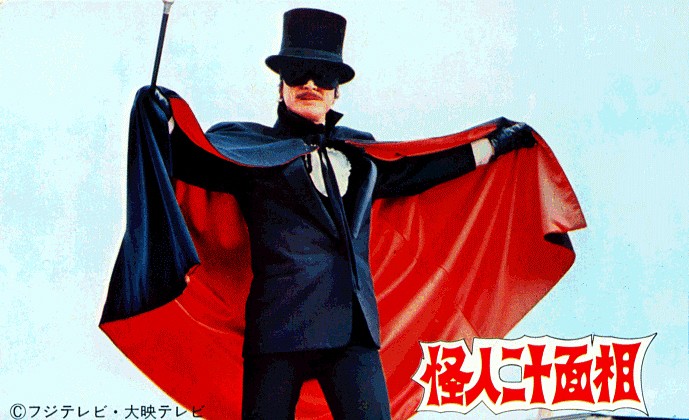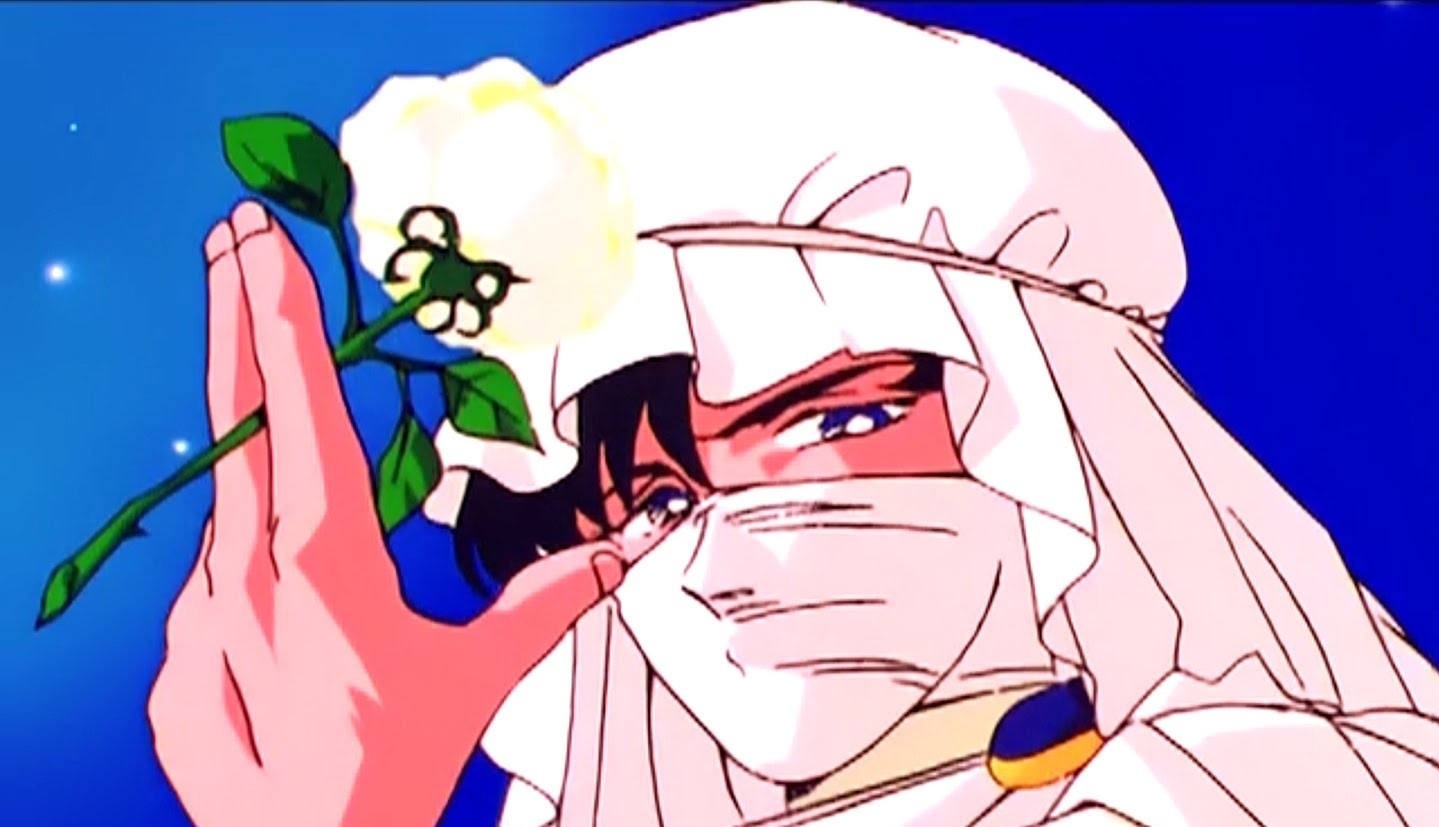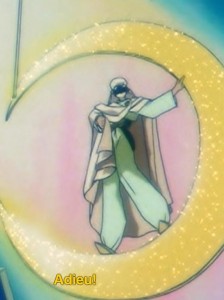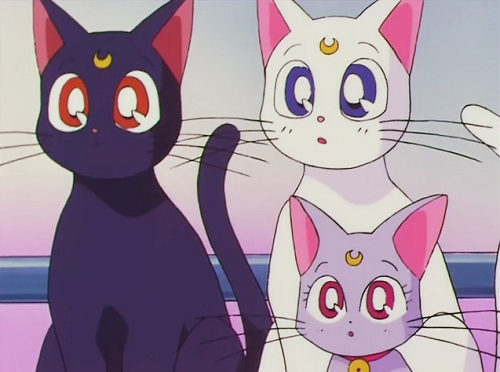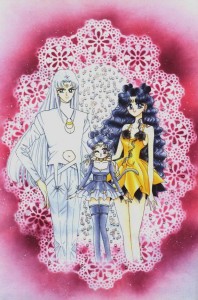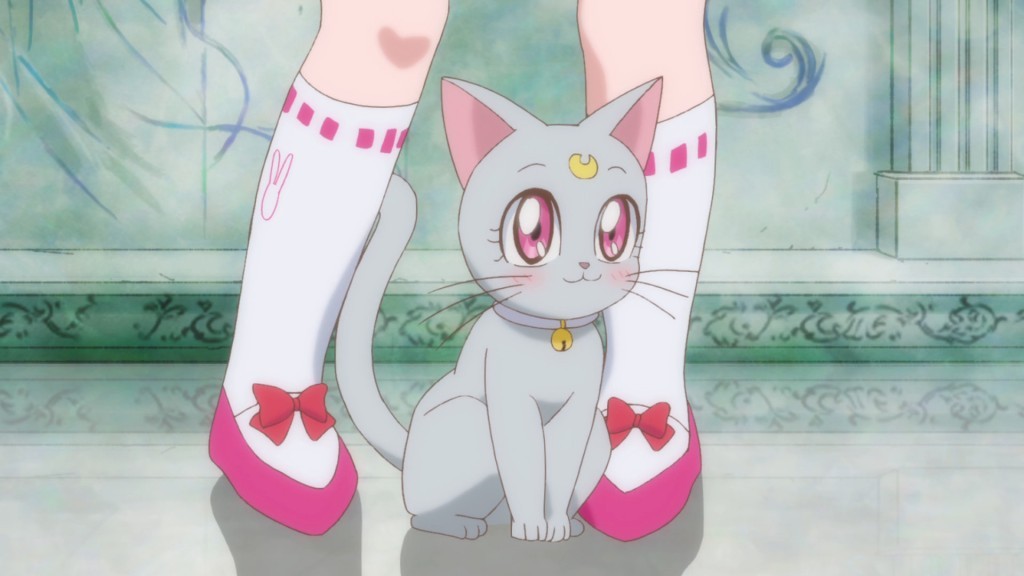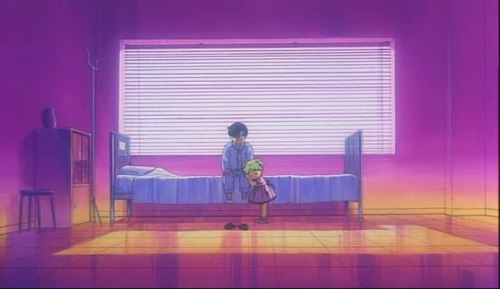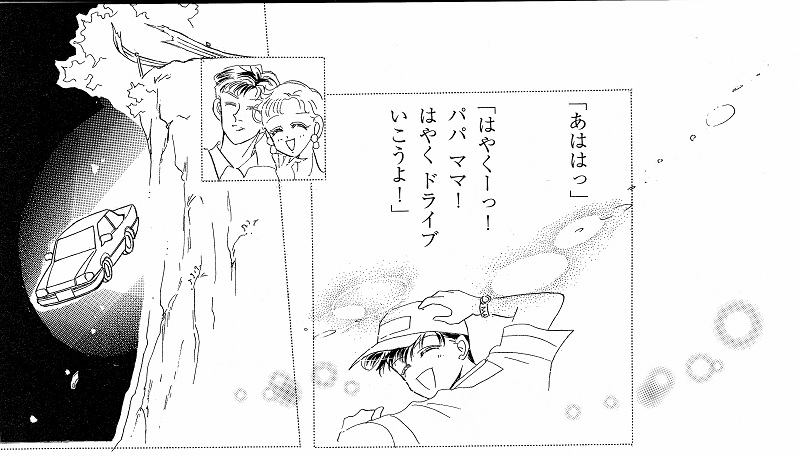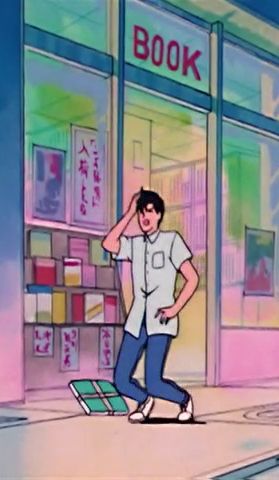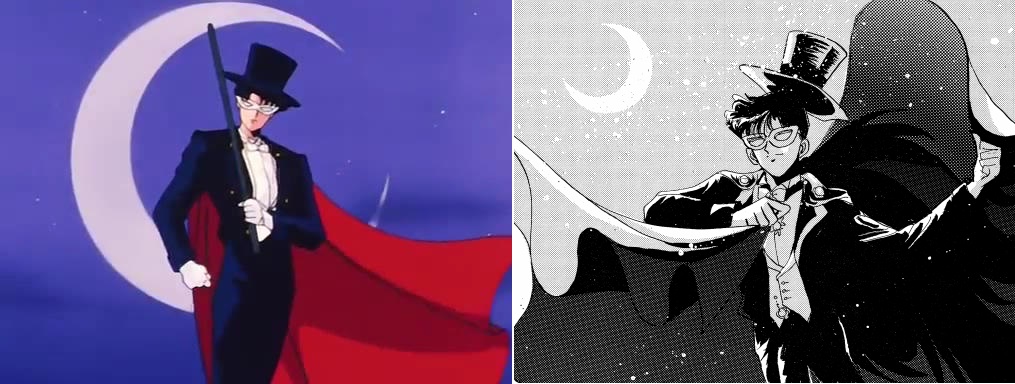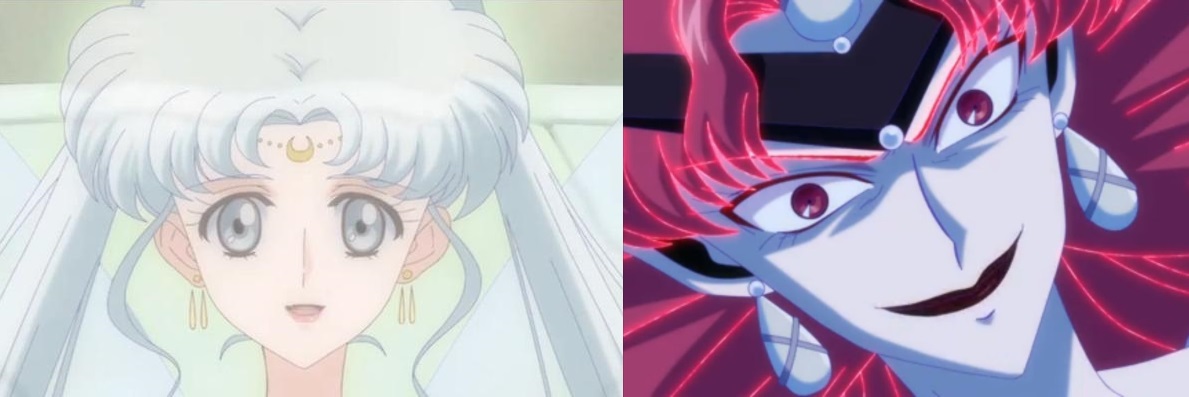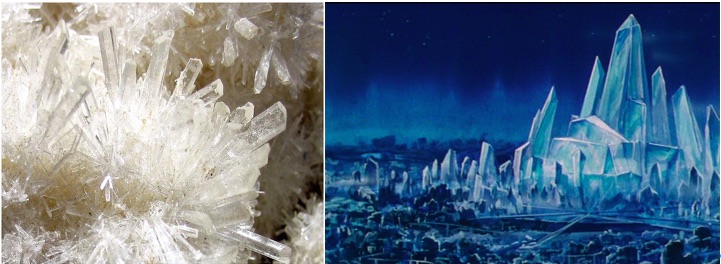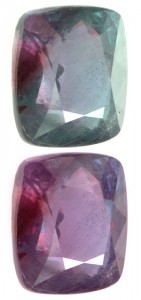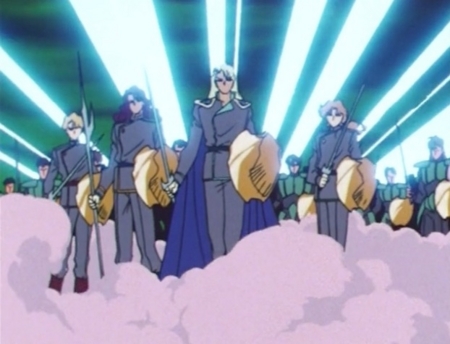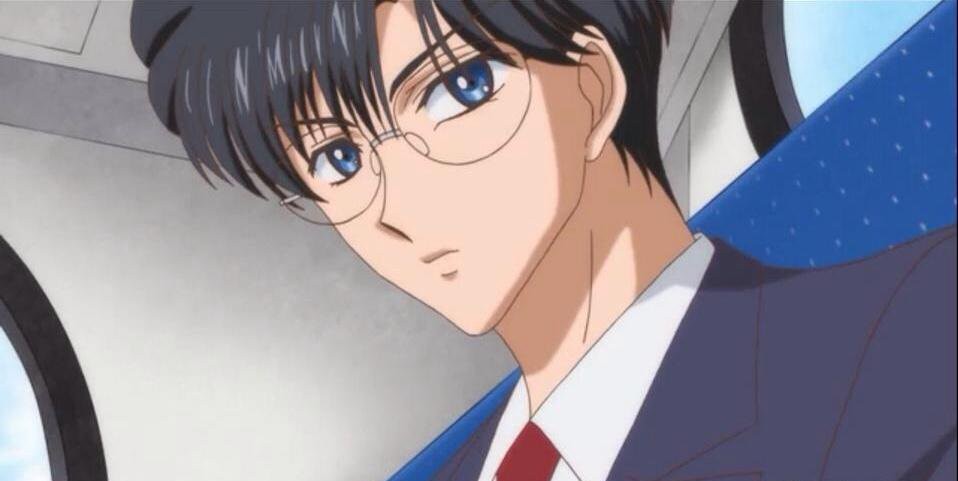While the idea of a masked hero coming to save the day isn’t exactly novel or unique, nor was Sailor Moon the first media in which one appeared, one thing that always did seem special about Tuxedo Mask was that he dressed up in such a fancy outfit while he did it. In some odd way, it seems oddly fitting for a high school/college student to dress in a suit and cape while throwing roses to save sailor-suited soldiers of justice. What a lot of people don’t know, however, is that there’s actually quite a bit of history to the creation of the character of Tuxedo Mask, from a popular Japanese character based on the Japanese adaptation of a French story, and has connections going back nearly one hundred years, and even has overlaps with the Sherlock Holme franchise. So who was the source of inspiration for Tuxedo Mask, and where did Ms. Takeuchi pick up the basis for his design?
Category Archives: Supporting Cast
Did Moonlight Knight Make a Mistake in French?
Moonlight Knight is a bit of an oddball character in the Sailor Moon anime, as he’s one of the few “hero” characters that exist only in the anime with no manga connections at all. The whole Cardian Arc1 was completely made up for the anime only, supposedly to give Ms. Takeuchi a chance to prepare her next story arc while the anime rushed ahead of her, though I’ve always suspected that the true purpose of this was to give them a sort of teaser for the upcoming Sailor Moon R movie. That, however, is a story for another time. What we’re here to look at is: what’s with Moonlight Knight’s use of French?
Possibly even more than Tuxedo Mask himself, Moonlight Knight was fond of long, dramatic speeches.2 More interesting to me, though, is what he said when he departed. Despite his strong Arabian design, Moonlight Knight always leaves the Sailor Team with a fancy “adieu.” What’s noteworthy about this is that it appears to have been a mistake by the anime production staff, directly translating his さようなら (sayounara; good bye) into something more fancy-sounding without looking into the cultural context. The issue here is that adieu implies that you don’t believe that you will see the other party again (at least not soon), and that you are saying good bye with a sense of finality. What he should have said was au revoir, which is used when you do believe that you will be crossing paths in the near future.3
While I would like to say that there was some sort of deeper meaning to this word choice and over-analyze the issue, I’m afraid that this is pretty much clearly a case of not having done the appropriate cultural research. If I were to read into the issue, however, I would say that you could make the assertion that this was Moonlight Knight’s way of expressing that he hoped he and Mamoru would soon re-join (i.e., Mamoru’s physical / human form and his sense of duty to protect the Sailor Soldiers) and was bidding them farewell. Put another way, by implying he would see them again would suggest that Moonlight Knight did not intend to return to Mamoru and resume his activities in the form of Tuxedo Mask.
Of course, this is probably looking way too into it, but it’s at least an interesting tidbit, if nothing else! Since Mamoru is a university student in the anime, and many university students are required to learn a second foreign language (other than English), it’s entirely plausible that he did study some French. You’re pretty clever, Mamoru!
What Is the Shared Mythology Between Luna, Artemis, and Diana?
Of course we already know that Luna, Artemis, and Diana are connected through their familial connection, so there isn’t much of a mystery there. What is interesting about this connection, however, is that though Ms. Takeuchi may have recycled the name of Diana, she made a wonderful choice by choosing that as the name for Luna and Artemis’ adorable daughter.
Most people are probably aware of the connection between Luna’s name and the Moon, especially speakers of English and the romance languages, since the name has been been reappropriated for many moon-related terms in astronomy, events, and phenomena (e.g., lunar eclipse, lunar calendar, lunar tides, etc.). The source of this name, like many names associated with the planets and stars, is Roman mythology. The Roman goddess Luna1 is the goddess of the moon, corresponding to the Greek goddess Selene.2 Interestingly enough, this shows a nice, clear tie between Usagi — Princess Serenity — and Luna, which really shows up in the interplay between the pair.
What about Artemis, then? Well, sorry to say to the gruff, male assistant to the sailor-suited soldier, Sailor V, Artemis was also a goddess, this time of the Greek variety.3 It’s not all bad for poor Artemis (the cat!) though; the goddess he’s modeled after was known for her prowess as a hunter and was often depicted with a bow and arrow and was known as the protector of young girls, which fits in well with his position as confidant, advisor, and assistant to Minako.
The question of the day, then, is who is Diana, and how are Luna and Artemis connected to her?
Interestingly enough, Diana is also a Roman goddess of the moon.4 More specifically, she is the Roman counterpart to Artemis, known originally as a goddess of hunting (once again, like Artemis, many of her appearances in art depicted her with bows, arrows, and hunted beasts). Later, she became more widely known as the goddess of the moon, eventually coming to replace Luna in that role in Roman mythology. Indeed, Luna eventually came to be known as an epithet5 — a descriptive name, of sorts — for the goddess Diana. Ultimately, Diana is both Artemis and Luna, making the name a wonderful choice for the daughter of the two feline guardians.
One final little bit of trivia: the Romanian word for fairy, ZẤNĂ,6 is said to have come from the name Diana. That helps explain the moon fairy connection in her original incarnation!
How Was Mamoru Affected by His Amnesia?
While we know that Mamoru was pretty different between the manga and the anime and that his alter-ego Tuxedo Mask wasn’t spared from changes, it’s also worth taking a look at how one of the more notable traits about Mamoru – his amnesia – was treated between the two versions. As happens with a great majority of the cast of Sailor Moon, it all starts with the tragic death of Mamoru’s parents, when he’s six years old (according to the manga, on his sixth birthday). As the story goes, he and his family get into a car accident and he’s the only survivor, though he’s been left with amnesia. This is where I think things get interesting.
Let’s stop for a moment and think about what this amnesia means for a bit. Though we usually talk about amnesia as one big, abstract thing, there are actually multiple forms. What is typically referred to in the Sailor Moon series is the form where, due to some form of emotional or physical trauma, you lose your memories of events leading up to it. This is known as retrograde amnesia.1 While this is made out to be a big thing, when you think about it, it actually has very little impact on him. If he lost all of his memories at six years old and, at the time of the series, he’s 16 or 18 years old (in the manga and anime, respectively), that would mean that he’s spent more years gaining new memories than he’s lost. In fact, due to a phenomenon known as childhood amnesia,2 most people don’t remember anything prior to the age of three.
Now, I don’t mean to trivialize his hardship, but that means that Mamoru had 10-12 years to rebuild and make new memories to replace the three years of his life that he forgot. I don’t know about you, but I’d say that it’s actually a relatively minor issue, in the grand scheme of things. In fact, manga Mamoru doesn’t seem terribly affected by this other than mentioning concern over whether he really is Mamoru Chiba and that he has dreams of a woman telling him to find the Silver Crystal.3 What about anime Mamoru, then?
Unfortunately, from what we see throughout the anime, he’s much worse off here. Not only does he suffer amnesia from before the accident, he also seems to suffer from occasional bouts of what’s known as anterograde amnesia,4 i.e., losing track of time and failing to create new memories as things happen. This seems to occur in conjunction with his transformation into Tuxedo Mask which, unlike in the manga, he’s actually unaware of his alternate identity entirely.
In Mamoru’s big reveal as Tuxedo Mask in the anime,5 upon sensing that Sailor Moon is in trouble trying to save Naru from Nephrite in his costume as the Tuxedo Mask imposter, Mamoru suddenly suffers from a massive headache as he’s walking down the street and drops to his knees before transforming into Tuxedo Mask.
What’s interesting here is that as he’s falling down, he says:
「ま、またか、頭がッ」 (ma, mataka, atama ga…)
“N.. not again, my head!”
So it seems that all of his transformations into Tuxedo Mask are not only happening without his knowledge, but he’s also left without any memories of it either.
I think it’s definitely interesting to see how both the manga and anime took the impact of the accident on Mamoru to completely different places. While it affected his sense of self in the manga (his sense of a missing past), more than anything else it seems to have caused a rift inside him in the anime, leading to the creation of Tuxedo Mask as a separate identity and his loss of memories during his transformation. Now if only someday someone would explain where all that money came from!
How Different Was Tuxedo Mask in the Anime and Manga?
Second only to Sailor Moon, Tuxedo Mask was one of the original suited soldiers of justice fighting for peace and love on behalf of the citizens of Tokyo. In addition to the rather substantial differences between anime and manga Mamoru, Tuxedo Mask (when taken as an individual character) was also rather different between the two. Today, we’re going to look at a few of those differences.
What Do Queen Serenity and Queen Metalia Have in Common?
Whether you look at the anime or manga or even the live-action series, despite how important they were to setting up the story behind the Sailor Moon series, Queen Serenity and Queen Metalia both get incredibly minor roles with very little explained about their past or motivations. What’s worse, the Serenity name is passed onto her daughter, Princess Serenity, who then passes it on to her daughter, Princess Usagi Small Lady Serenity. But is there more to these characters than meets the eye? I think so, and that’s what we’re here to look into!
Queen Serenity
Starting with the Serenity line, it’s fortunately pretty easy to track down the meaning and history behind her name, though most of it is probably connected more to Princess Serenity / Usagi more-so than her mother. The most obvious and meaningful connection is the Greek myth of the relationship between Selene, the moon goddess, and the mortal Endymion.1 This gets us partly to the name “Serenity,” though we have one (or possibly two!) other sources of inspiration, all inspired by the Greek connection to the moon.
We all know that Ms. Takeuchi had a strong attachment to astronomy during her developmental years and did a lot of research when making the series, so it should come as no surprise that Usagi’s royal name would be connected to a basin on the Moon, the Mare Serenitatis — or, in English, the Sea of Serenity.2 This is also, incidentally, where the Moon Kingdom was said to be located and where the Sailor Team head in both the anime and manga to consult with the memory of Queen Serenity among the ruins of the Silver Millenium.
So then, what is this third possible reference? Though less of a connection to the late Queen Serenity herself, there seems to be a strong implied connection between Neo-Queen Serenity, Crystal Tokyo, and the mineral known as selenite.3 Selenite is most often clear, though can appear white, pearl, or a variety of other colors depending on impurities. Most notably, it often is found in columns and in tubular designs, not much unlike the designs of the Crystal Tokyo Palace and the Silver Crystal.
Queen Metalia
Like the Four Kings, the connections to geology are a lot more obvious with the Dark Kingdom. There are two notes about the dual monarchy — Queen Beryl and Queen Metalia — that are not obvious at first glance, however. First off, while the most obvious connection with Queen Beryl is to the gemstone beryl.4 However, it’s a little more complicated than that. You see, the Japanese word for queen is 王女 (oujo; queen) though Ms. Takeuchi tends to write the titles (e.g., princess, queen, etc.) out phonetically, such as クイーン (kui-n; queen). However, the titles for both Queen Beryl and Queen Metalia are misspelled in Japanese, and are written as クイン (kuin; no meaning). Why is that?
Well, it’s to give it a double meaning. While it still sounds reasonably close to queen (and is treated canonically that way), it also looks similar to クリソ (kuriso; chryso). So actually, Queen Beryl’s name is more strongly connected to chrysoberyl.5 Just by looking, you can see that this stone much more closely matches the color scheme associated with Queen Beryl, so it’s pretty clear that this is more likely a closer source for her inspiration than normal beryl.
That means that the chryso- connection probably also remains true for Queen Metalia as well, since her name is also written in the same (misspelled) manner. Since here’s no substance known as metalia, we can rule out any special connection there other than it simply being a reference to metal, but with the chryso- prefix attached,6 it modifies the meaning to the metal, gold.
What that ultimately leaves us with is the villain, an evil queen born of hatred from the sun and named in honor of the mineral gold fighting against the Silver Millenium, ruled by the queen of the moon.
Though we never did learn as much about the motivations behind Beryl, Metalia, and the formation of the Dark Kingdom (outside of the musical, of course!) as I would have liked, it’s nice to know that Ms. Takeuchi went through quite a bit of effort to put a little more detail into their names than you’d initially assume. I have to admit, she’s pretty tricky!
How Smart Is Mamoru in the Anime and Manga?
One of the well-known – yet often forgotten – facts about Mamoru’s character is that he’s not only tall, mysterious, rich, and handsome, but he’s actually quite brilliant. In fact, if you were to judge by the levels of the schools he attends, he’s arguably on level with – or even above! – Ami. Of course we’ve already mentioned that Mamoru was changed from a high school student to a university student in the transition from manga to anime, but that actually has very little impact on the conclusions we can make, for reasons we’ll discuss below. So just how smart is Mamoru Chiba? Let’s find out!
